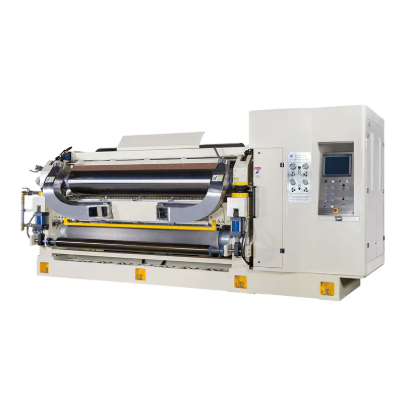The production of corrugated cardboard relies heavily on a Corrugator Line, a complete system that transforms paper rolls into durable corrugated sheets used for packaging. This line integrates multiple machines and processes, ensuring consistent quality, high productivity, and smooth operation for packaging manufacturers. Understanding the structure and benefits of a Corrugator Line can help companies optimize production and meet market demands effectively.
A Corrugator Line typically starts with paper unwinding units. These units feed the corrugating medium and linerboards into the system. Proper tension control and alignment are essential at this stage to prevent wrinkles or misalignment, ensuring that the corrugated sheets have uniform thickness and strength.
Next, the paper passes through corrugating rolls that shape the medium into fluted forms. A Corrugator Line carefully maintains temperature and pressure in these rolls to achieve consistent flute profiles. This process is critical because the fluting determines the structural strength and cushioning properties of the final cardboard.
Adhesion is another important step in a Corrugator Line. The fluted medium is glued to one or both linerboards using starch-based adhesives. A well-calibrated corrugator ensures even glue distribution, which directly affects the durability and rigidity of the finished corrugated sheets. Inconsistent adhesion can lead to product defects, making quality control an integral part of the line.
Drying and pressing sections follow, where heat and pressure solidify the adhesive bonds. A Corrugator Line uses precise temperature control and pressure settings to maintain production speed while ensuring the structural integrity of the boards. This combination of heat and compression also reduces moisture content, which helps prevent warping or deformation.
Cutting and scoring units are integrated into a Corrugator Line to create sheets or pre-scored boards for boxes and packaging. Automation in these sections allows for accurate sizing, reducing material waste and increasing operational efficiency. Many lines also incorporate stacking and packing systems to prepare finished products for shipping.
Maintenance and monitoring are essential for the continuous operation of a Corrugator Line. Regular inspection of rolls, motors, glue systems, and control units helps avoid unplanned downtime. Modern corrugator lines often include digital control systems for real-time monitoring, improving overall efficiency and reducing labor requirements.
Flexibility is another advantage of a Corrugator Line. Manufacturers can adjust the line to produce different flute sizes, sheet widths, and board grades depending on customer needs. This adaptability allows packaging companies to respond quickly to market changes and meet diverse packaging specifications.
A Corrugator Line is a critical investment for corrugated cardboard production. By integrating precise unwinding, corrugating, adhesive application, drying, and cutting processes, these lines provide efficient, consistent, and high-quality output. Choosing a well-maintained and properly configured Corrugator Line enables packaging manufacturers to produce durable cardboard products while optimizing production efficiency and flexibility in a competitive market.
https://www.zjyhroller.com/product/corrugated-cardboard-line/
